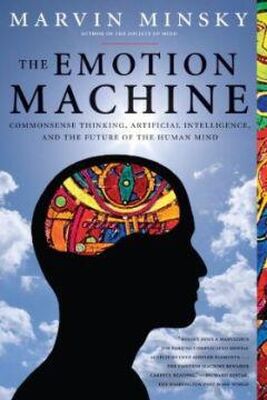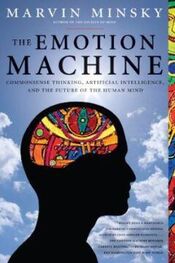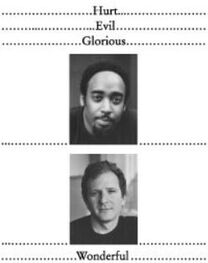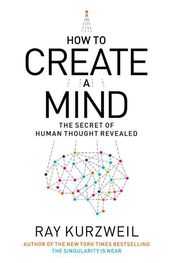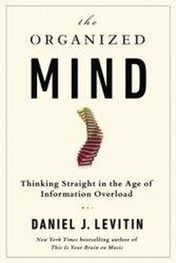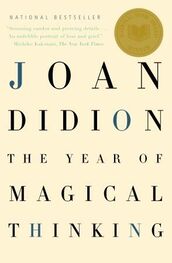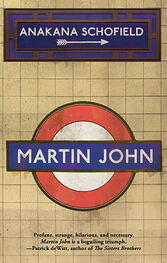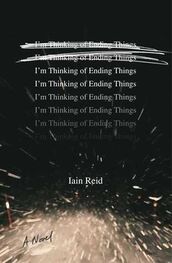Pohl, 1970: This situation is described in the title story of Frederik Pohl’s anthology, Day Million, Ballantine Books 1970 ISBN 0330236067.
Poincare 1913: Henri Poincaré. The Foundations of Science, Science and Hypothesis, The Value of Science, Science and Method , The Science Press, 1929, ISBN: 0819123188
Polya 1954: George Polya , Induction and Analogy in Mathematics, Princeton Univ. Press, ISBN: 0691025096.
Polya 1962: G. Polya. Mathematical Discovery . John Wiley and Sons, 1962.
Proust 1927: Proust, Marcel. Remembrance of Things Past, New York: Random House 1927-32
Pylyshyn 1998: Zenon Pylyshyn, Is Vision Continuous With Cognition, discusses many issues related to the structure of the visual system, athttp://ruccs.rutgers.edu/faculty/ZPbbs98.html.
Quillian 1966: Ross Quillian, Semantic Memory, Ph.D. thesis, Carnegie Institute of Technology, Pittsburgh, Pennsylvania, February 1966. Reprinted in Minsky 1968.
Ramachandran 2004: V.S. Ramachandran, Science, Vol 305 no 5685, 6 August 2004.
Rosenfeld 1996: Ronald Rosenfeld, "A maximum entropy approach to adaptive statistical language modeling,” Computer, Speech and Language, 10, 1996 . Also at http://www.cs.cmu.edu/afs/cs/user/roni/WWW/me-csl-revised.ps.
Royce 1908: Josiah Royce, The Philosophy of Loyalty, Vanderbilt Univ. Press, 1995, ISBN 0826512674
Ryle 1949: Gilbert Ryle, The Concept of Mind , The University of Chicago Press, 1949
Samuel 1959: Arthur L. Samuel, "Some studies in machine learning using the game of checkers," IBM J. Res. Dev., vol. 3, pp. 211-219, July 1959.
Schaffer 1964: H.R. Schaffer and P. E. Emerson in ‘The development of social attachments in infancy,’ Monogr. Soc. Res. Child Dev., 29, 3, 1964.
Schank 1975: Roger C. Schank, Conceptual Information Processing , Elsevier Science Publishers 1975. ISBN: 0444107738.
Schank 1977: Roger Schank and Robert Abelson, Scripts, Goals, Plans and Understanding," Erlbaum Associates, 1977.
Schank 1990: Tell Me a Story, Charles Scribner's Sons, New York, 1990. Reissued, Northwestern University Press, 1995, ISBN 0810113139.
Seay 1964: B. Seay, B. R. Alexander, & H. F. Harlow, Maternal behavior of socially deprived rhesus monkeys, J. Abnormal and Social Psychology, 69, 345-354.
Seckel 2004: Masters of Deception, Sterling Publishing, New York, ISBN 402705778.
Shannon 1948: Claude E. Shannon, “A Mathematical Theory of Communication,” Bell System Technical Journal, vol. 27, pp. 379-423 and 623-656, July and October 1948. Also at http://cm.bell-labs.com/cm/ms/what/shannonday/shannon1948.pdf
Sindbad 1918: Anonymous, : The Arabian Nights Entertainments , Longmans, Green and Co, 1918 (1898). http://www.sacred-texts.com/neu/lang1k1/tale21.htm.
Singh 2002: Push Singh, Thomas Lin, Erik T. Mueller, Grace Lim, Travell Perkins and Wan Li Zhu, “ Open Mind Common Sense: Knowledge acquisition from the general public,” Proceedings of the First International Conference on Ontologies, Databases, and Applications of Semantics for Large Scale Information Systems . Irvine, CA.
Singh 2003: Push Singh, Examining the Society of Mind. Computing and Informatics , 22(5):521-543. 2003. This article briefly describes the history of the Society of Mind theory, explains some of its essential components, and relates it to recent developments in Artificial Intelligence. Also at http://web.media.mit.edu/~push/ExaminingSOM.pdf.
Singh 2003a: Push Singh and Marvin Minsky, An architecture for combining ways to think. Proceedings of the International Conference on Knowledge Intensive Multi-Agent Systems . Cambridge, MA. (2003).
Singh 2003b: A preliminary collection of reflective critics for layered agent architectures. Proceedings of the Safe Agents Workshop (AAMAS 2003) . Also at http://web.media.mit.edu/~push/ReflectiveCritics.pdf
Singh 2003c: Push Singh and William Williams (2003). LifeNet: a propositional model of ordinary human activity . Proceedings of the Workshop on Distributed and Collaborative Knowledge Capture (DC-KCAP) at K-CAP 2003. Sanibel Island, FL. At http://web.media.mit.edu/~push/LifeNet.pdf
Singh 2004: Push Singh, Marvin Minsky and Ian Eslick, Computing commonsense , BT Technology Journal, Vol 22 No 4, October 2004. Also at http://web.media.mit.edu/~push/Computing-Commonsense-BTTJ.pdf
Singh 2005: Push Singh, EM-ONE: An Architecture for Reflective Commonsense Thinking, PhD thesis, MIT, June 2005. Also at http://web.media.mit.edu/~push/push-thesis.pdf
Singh 2005b: Push Singh and Marvin Minsky. An architecture for cognitive diversity, Visions of Mind , Darryl Davis (ed.), London: Idea Group Inc. (2005). http://web.media.mit.edu/~push/CognitiveDiversity.html.
Sloman 1992: Aaron Sloman, “Developing concepts of consciousness.” Behavioral and Brain Sciences 14, 1992.
Sloman 1994:Aaron Sloman, in newsgroup comp.ai.philosophy, 14 Dec. 1994
Sloman 1996 : Aaron Sloman , in newsgroup sci.psychology.consciousness, 19 Jun 1996. See also A Systems Approach to Consciousness , at http://www.cs.bham.ac.uk/~axs/misc/consciousness.rsa.text, with lecture slides at http://www.cs.bh.am.ac.uk/~axs/misc/consciousness.lecture.ps.
Solomonoff 1957: Raymond J. Solomonoff, "An Inductive Inference Machine," IRE Convention Record, Section on Information Theory, Part 2 , pp. 56-62, 1957.
Solomonoff 1964: Solomonoff, R. J. “A formal theory of inductive inference,” Information and Control , 7 (1964), pp.1-22;
Solomonoff 1997: Solomonoff, R. J. “The Discovery of Algorithmic Probability,” Journal of Computer and System Sciences , Vol. 55, No. 1, 1997, at http://world.std.com/~rjs/barc97.html.
Spencer-Booth 1971: Y. Spencer-Booth and R. A. Hinde, Animal Behavior, 19, 174-191 and 595-605, 1971
Spencer-Brown 1972: G. Spencer-Brown, Laws of Form, Crown Pub. 1972, ISBN: 0517527766
Sri Chinmoy 2003: http://www.yogaofsrichinmoy.com/the_higher_worlds/consciousnesss/
Stickgold 2000: Robert Stickgold, April Malia, Denise Maguire, David Roddenberry, Margaret O'Connor, "Replaying the Game: Hypnagogic Images in Normals and Amnesics," Science, Volume 290, Number 5490, 13 Oct 2000, pp. 350-353.
Thagard 2001: Paul Thagard, “How to make decisions: Coherence, emotion, and practical inference,” In E. Millgram (Ed.), Varieties of practical inference, MIT Press. 355-371. text at http://cogsci.uwaterloo.ca/Articles/Pages/how-to-decide.html
Thorndike 1911: Edward L. Thorndike. Animal Intelligence . New York: Macmillan 1911, p. 244.
Tinbergen 1951: Nikolaas Tinbergen, The Study of Instinct, Oxford University Press, London 1951.
Turing 1936: Alan Turing, “”On Computable Numbers,” http://www.abelard.org/turpap2/tp2-ie.asp#section-1
Turing 1950: Alan Turing, “Computing Machinery and Intelligence.” Mind 49: pp 433-460, 1950. Also at http://cogprints.org/499/00/turing.htmland at www.cs.swarthmore.edu/~dylan/Turing.html
Viezzer 2000: Manuela Viezzer, Ontologies and Problem-solving methods, ECAI 2000, 14th European Conference on Artificial Intelligence, August 2000, Humboldt University, Berlin. Also at www.cs.bham.ac.uk/~mxv/publications/onto_engineering.
Vinacke 1952: W.E. Vinacke, The Psychology of Thinking, 1952, McGraw Hill
Waltz 1985: David L. Waltz and Jordan Pollack in "Massively Parallel Parsing," Cognitive Science, 9(1), 1985.
Watts 1960: Alan Watts, This is It, Random House, 1960, ISBN 0394719042 , pp. 32-33
Wertheimer 1945: Max Wertheimer, Productive Thinking. New York: Harper 1945.
Читать дальше